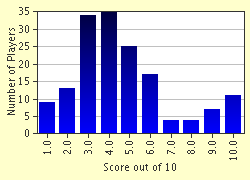Quiz Answer Key and Fun Facts
1. I lifted the title of this quiz from a poem by an American poet. Which one?
2. One of my favourite poets is A.E. Housman. He wrote a poem extolling "the loveliest of trees" in bloom. Which tree did he deem the loveliest?
3. Which tree did American poet James Russell Lowell call "most shy and ladylike of trees"?
4. Who wrote about "the spreading chestnut tree" in one of his poems?
5. What, according to Dylan Thomas, does 'The Force That Through the Green Fuse Drives the Flower' do to trees?
6. Which poet wrote "Where'er you walk, cool gales shall fan the glade,
Trees where you sit shall crowd into a shade."?
7. One poet described a small bird as a "light-winged Dryad of the trees" which "singest of summer in full-throated ease". Which poet?
8. In which of Shakespeare's sonnets will you find trees described as "bare ruined choirs" ?
9. Who wrote the poem that opens with the line "The wind was a torrent of darkness upon the gusty trees"?
10. Who wrote a poem featuring a Bong tree?
Source: Author
Cymruambyth
This quiz was reviewed by FunTrivia editor
LeoDaVinci before going online.
Any errors found in FunTrivia content are routinely corrected through our feedback system.

